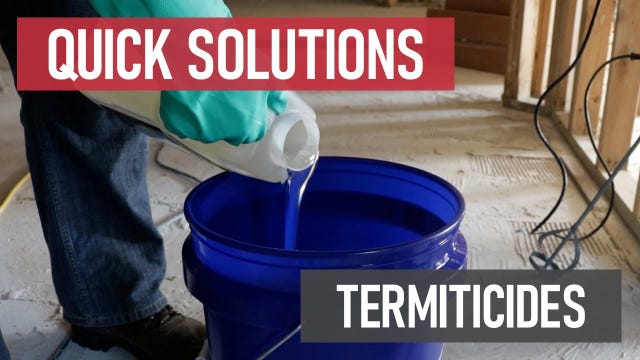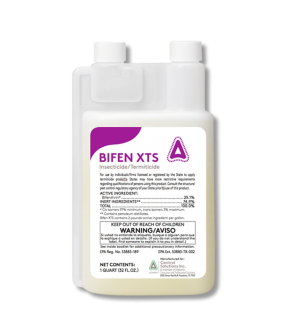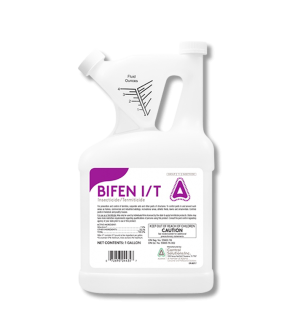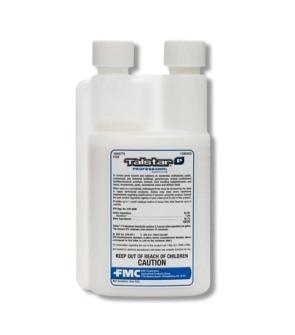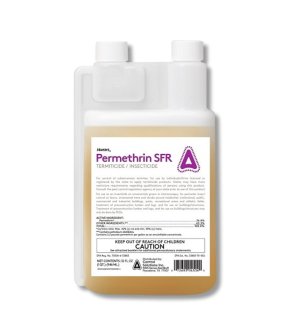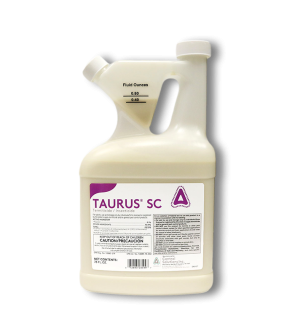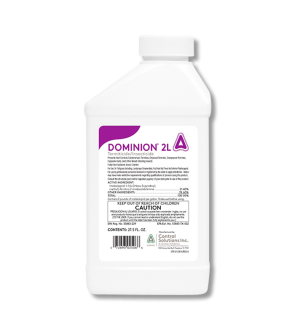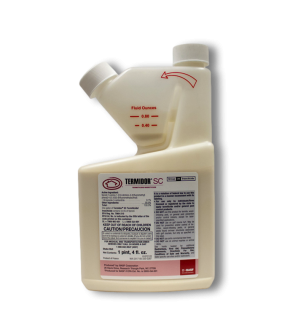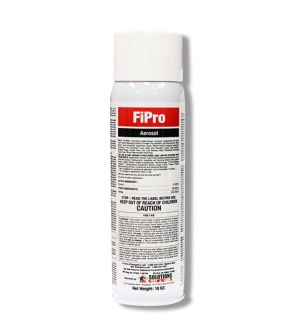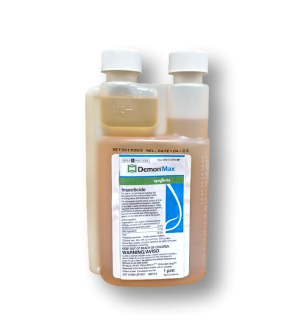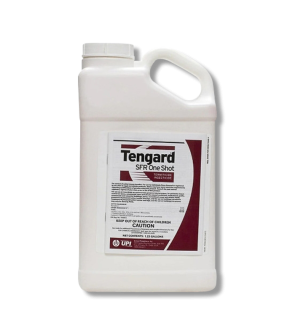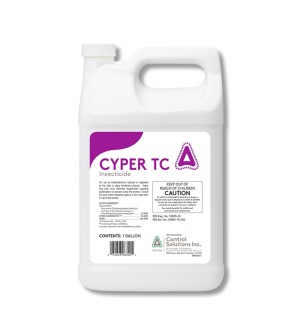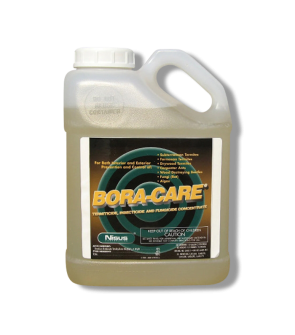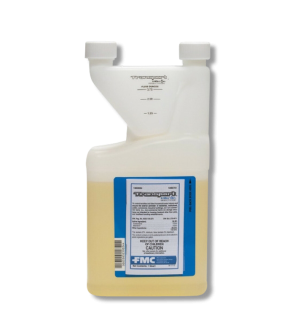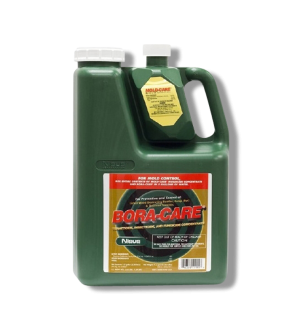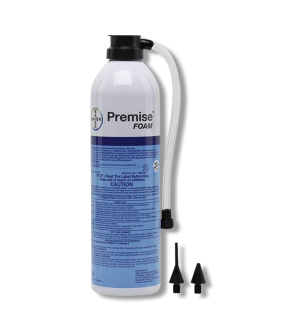Gain access to personalized product screening, the best pricing, rewards, and more!
Most Effective Products
Termiticides
When it comes to treating active and future termite infestations, among the best kind of insecticides to use are termiticides. Today, there are two types of termiticides on the market those that are applied to wood or soil.
On this page, you will learn a little about termiticides, their benefits, and how to properly apply them. You can also browse our selection of termiticide products that we carry at Solutions Pest and Lawn.
What Are Termiticides?
Termiticides are chemicals specially designed to control, repel, or kill termites. Depending on the manufacturer, these pesticides are formulated as baits, granules, foams, liquids, or dusts.
Most termiticides function as a non-repellent, but some brands are known to create residual termiticides.
Their residual effect and rate of control depends on its active ingredients. Termiticides work by killing and repelling listed termites through either soil or wood treatments.
Common active ingredients in termiticides include bifenthrin, fipronil, and borates including disodium octaborate tetrahydrate.
Conditions for Using Termiticides
Termite activity usually takes several months to sometimes even years before you begin notice their activity. As a result, buildings and trees become structurally weakened as a result of extensive feeding activities.
Chemical treatments with termiticides around or under the foundation of buildings or in the wood of these sites or foliage serves as one of the most important means to termite control.
Termiticides are intended to provide protection for an extended period of time against termite attacks and potential larvae development.
Termiticide treatments are most effective when done before and during construction of the structures foundation. It is also important to during slab-on-ground construction and existing trees on the property.
Benefits of Using Termiticides
The biggest benefit of using termiticides is their longevity. Termiticide products offers months to years of protection and control against termite infestations.
They are also convenient to homeowners and business owners because depending on the active ingredients they slowly work on the termites central nervous system.
Leading to death within 1 to 3 days, which ensures that a majority of the population contacts the treated area for faster and complete death. This means that foraging termites spread the chemical either by contact or sharing food sources with other members in the nest, thus eliminating the termite colony.
Termiticides Drawbacks
Some disadvantages of termiticides mostly have to do with the fact that many of them are not intended to be used in already completed structures. The cost and dangers of removing walls to treat existing termite infestations can be high.
Most termiticides are best used as a trench or drill application around finished structures, which proves to be more effective as most termite species grow their colonies in the surrounding soil.
The effectiveness of termiticides can also depend on several factors such as the type of termiticide treatment used, severity of the infestation, and environmental conditions. In general, termiticides are best used for long-term infestations.
However, keep in mind that termites can reinfest treated structures and areas if preventative measures are not taken before periods of termite activity.
Our Recommendations
Not all termiticides are created the same. There are various types of termiticides with different forms of control.
Some termiticides classify as either a repellent or non-repellent formulation and may even be classified under the title of insecticide only. However, the term termiticide must be mentioned somewhere in the following content of the label for it to be considered one.
Supreme IT - Supreme IT is a repellent insecticide that contains the active ingredient bifenthrin 7.9% which helps to repel and eliminate over 70 types of insect species, including termites.
Taurus SC - Taurus SC is a non-repellent insecticide and termiticide that contains the active ingredient fipronil 9.1%. Once applied, it will create a 90 day barrier against general pests and a 10 year barrier for termites in treated soil.
FiPro Foaming Aerosol - FiPro Foaming Aerosol is a foaming insecticide that controls pests, including termites in voids, cracks, and crevices.
BoraCare Termite Treatment - is a borate-based termiticide, insecticide, and fungicide that controls pests like termites in wooden sites.
Tools Needed
Depending on the type of termiticide being used and treatment method, the application equipment will vary. It's always best to refer to the product label for clear instructions.
To create a trench treatment, you will need to use a pickaxe or shovel to dig up the soil and a 5-gallon bucket or tank mixer to mix the termiticide in.
You may also need a sub-slab injection equipment to drill and inject the product under concrete surfaces.
Other types of termiticide treatments may simply require the use of a handheld pump sprayer, backpack sprayer, hose-end sprayer, or spray rig. If it is a ready-to-use product then simply wear a pair of chemical-resistant gloves.
User Guide

Step 1: Prepare The Treatment Area
Read the product label to determine what treatment method can be used. We will focus on the most common termiticide applications which are trench treatments or void applications.
To prepare for a trench treatment, determine the square footage of the structure to be treated. To do this, measure the length and width of the treatment area in feet then multiply them together (length X width = square footage).
Mix and pour according to the termiticide instructions then set the solution aside as you create the trench. Dig a trench around the structure as instructed on the termiticide label.
To make ready-to-use termiticide foam applications, you may need to drill several holes in the area to be treated.
Step 2: Apply Termiticide Product
Closely follow the label instructions to determine how to complete trench applications. You may need to pour the termiticide solution into the trench then refill with dugged up soil.
For ready-to-use termiticide foam products, simply work termiticide foam into voids and drilled surfaces until the proper amount of product is applied.
All termiticide label applications must be followed as these are general application methods with no reference to a specific termiticide product.
To use specific insecticide products such as the ones we recommended above refer to the following steps.
How to Use Supreme I/T
Supreme I/T is a concentrate made with bifenthrin. This product controls termites, carpenter ants, and over 70 different pests.
Note, any pesticide with “I/T” in its name is labeled to control insects & termites.
Applications for termites include as a foam, under slabs, for trenching and rodding, and pre-construction or post-construction treatments.
To kill termite workers and winged reproductives above ground, dilute 1 fl. oz. of product into 1 gallon of solution per 1,000 sq. ft.
This makes the 0.06% emulsion required for this application and other applications in the product’s label.
With a course fan spray, treat swarming termites, the areas where they gather, and infested wood.
How to Use Taurus SC
Taurus SC is a suspended concentrate. When applied, this product leaves a non-repellent residual barrier.
To treat and prevent termites, this product may be applied as a trench treatment. Other treatments incude rodding, sub-slab injection, and foam delivery.
To apply as a trench treatment, dig trenches at least 6 inches deep and at most 6 inches wide.
To mix the solution, mix 0.8 fl. oz. of product for every gallon of water. Apply 4 gallons of solution for every 1 linear feet.
When applied as a trench application, Taurus SC can remain active in the soil for up to 10 years.
How to Use FiPro
FiPro is a ready-to-use aerosol insecticide. When applied, the foam expands to coat surrounding surfaces in cracks, crevices, and voids.
This product may be used as a preventive or curative interior structural void treatment for subterranean termites.
In voids, spray long enough for the product to expand and cover the entire surface area.
FiPro slowly disrupts a pest’s nervous system and protects treated areas for up to 30 days.
How to Use Boracare
Bora-Care is an emulsified concentrate used to protect wood from wood-infesting pests like termites or powderpost beetles.
For subterranean or Formosan termites, mix Bora-Care with water at a 1:1 or 2:1 ratio of product to water.
For drywood termites, you may also mix a 5:1 ratio for preventive applications.
This product must be mixed with hot water before application. Once mixed, apply your solution with a handheld sprayer.
Spray your solution onto exposed wood. You may want to apply a second coat after the first coat dries.
When properly applied and sealed, Bora-Care will protect treated areas from wood-infesting pests for up to 30 years.
What to Expect
Before handling any product, put on your proper personal protective equipment (PPE) to avoid direct contact with any pesticide.
The effectiveness of your treatment will depend on the type of termiticide used, the application method, and the severity of the infestation.
Key Takeaways
- Termiticides are a popular form of pest control as it results in effective and long-term control against termites.
- Most termiticide products are known to have a long-term residual effect where they are applied.
- To remain effective, regular termiticide applications are still recommended as well as removing conditions that attract these insects to your property.






